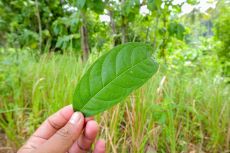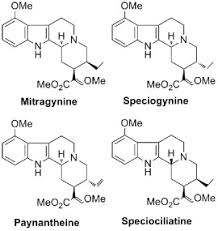Guide to Kratoms Origins and Characteristics
Kratom, known scientifically as Mitragyna speciosa, is a tropical evergreen tree in the Rubiaceae family, native to Southeast Asia. Its natural products hail from regions like Indonesia, Thailand, and Malaysia. It shares a family with other well-known plants such as the coffee tree. The leaves of the kratom tree have been of cultural significance for centuries, traditionally used for their unique properties.
When exploring kratom, it’s essential to recognize the various strains available, which differ based on geographical origin and leaf vein color. Each strain possesses a distinctive chemical composition, contributing to their unique effects. This, coupled with heightened interest from consumers, has made kratom an intriguing topic within both the scientific community and the general public.
Key Takeaways
- Kratom is a tropical plant that primarily grows in Southeast Asia
- It belongs to the Rubiaceae family (like coffee) and has multiple strains with unique characteristics.
- Consumers should pay attention to the differences amongst strains to decide which works best for their individual needs
The Botanical Family: Rubiaceae

The Rubiaceae family, containing a vast array of flowering plants, is renowned for its significant contributors to human culture and herbal medicine. Among its most recognized members is the Kratom plant, fitting seamlessly into the diverse Rubiaceae tableau.
Geographical Presence and Leaf Morphology
Plants in this family predominantly flourish in the balmy climates of tropical and subtropical areas. Generally, they exhibit a leaf arrangement that is rather uniform, featuring simple, often elliptical leaves arranged oppositely along their stems.
Noteworthy Rubiaceae Members
- Coffea: This genus gifts the world with coffee beans, prominently Coffea arabica and Coffea canephora.
- Cinchona: Celebrated for its bark rich in quinine, it has been a staple in malaria treatment.
- Carapichea ipecacuanha: Key source of ipecac syrup, used medically to provoke vomiting.
Kratom: A Rubiaceae Star
Kratom, with its species name Mitragyna speciosa, shares its family traits while distinguishing itself with unique vein colorations:
- Red Vein Kratom: Touted for its relaxing properties.
- White Vein Kratom: Often associated with stimulating effects.
- Green Vein Kratom: Balances between the red and white in terms of effects.
Popular strains like Maeng Da have elevated the profile of Kratom, offering variations not only in color but also in the potency and balance of effects they provide. Each vein type contributes its peculiar chemistry, intertwined within the Rubiaceae family’s framework.
Comparison Within Species
Although these plants hail from the same family, the spectrum of color in Kratom’s leaves—each with its own fan base—demonstrates a remarkable variety within a single genus. They are a testament to the family’s evolutionary success and adaptability.
Kratom Strains: Geographical and Color Variations
Kratom, a tropical tree native to Southeast Asia, presents a diversity of strains influenced by both their regional origins and vein colors, each with distinctive properties and effects.
Geographical Origins
Different regions are renowned for cultivating distinctive kratom strains, each with its own characteristic profile. Thailand, Malaysia, Indonesia, and regions like Bali and Borneo contribute significantly to the variety of kratom available. Unique strains such as Hulu, Jong Kong, and Kali also originate from specific locales, offering an array of benefits influenced by the unique climate and soil conditions of their growing regions.
- Thailand: Produces strains noted for robust effects due to Thailand’s rich soil and humid environment.
- Bali and Borneo: Known for high-quality strains, where the equatorial climate contributes to their potency.
- Malaysia: Malaysian strains are influenced by the tropical rainforest climate, resulting in unique alkaloid contents.
- Indonesia: With a wide range of islands like Sumatra and Java, the country’s diverse climates yield a variety of strains.
- Papua New Guinea: Newer to the kratom market, this region’s strains are still being explored for their unique properties.
The geographical factors not only contribute to the kratom’s alkaloid profile but also affect the plant’s effects.
Vein Colors
Kratom’s leaves display distinct colors on their veins, each signifying a different chemical composition and effects on the user:
- Red vein: Often associated with soothing and relieving qualities.
- Characteristics: Typically harvested from mature trees and believed to offer the most potent relaxation.
- White vein: Sought for its invigorating and mood-lifting effects.
- Characteristics: Usually comes from younger trees with a more stimulating alkaloid profile.
- Green vein: Presents a harmonious balance between relaxation and stimulation.
- Characteristics: Versatile for use at any time of the day, providing moderate effects.
- Yellow vein: A rarer color with effects that are believed to fall between red and green.
- Characteristics: Could be a result of specific drying processes or a blend of different vein colors.
While the specific impact of each vein color may vary, the color is generally a good indicator of what one might expect from a particular strain. It’s important for users to choose the strain and vein color that aligns with their desired outcome, be it for enhancing mood, increasing energy, or aiding relaxation.
Chemical Composition: What Makes Each Strain Unique
Kratom’s diverse effects are largely due to its complex chemical composition, which varies from strain to strain. These nuances are imperative for understanding kratom’s unique botanical identity.

Active Ingredients
Kratom is a powerhouse of several alkaloids with mitragynine, paynanthine, speciociliatine, and 7-hydroxymitragynine (7-HMG) as notable constituents. They are paramount in defining the plant’s effects. Additionally, there are over a dozen minor alkaloids that add depth to the unique properties of each strain.
- Mitragynine: Predominant in concentration
- 7-Hydroxymitragynine: Significant for potent effects, despite lower presence
Strain Variability
What sets each kratom strain apart is its distinctive blend of alkaloids. These variations impact factors such as the color of leaf veins, spanning from red to green to white.
- Leaf Vein Color: Indicator of alkaloid composition
- Effects: From stimulating to sedating, contingent on strain
Practical Implications for Consumers
When choosing kratom, consumers face critical decisions that influence their experience. The type of strain and the product’s quality are pivotal considerations.
Choosing the Right Strain
Kratom varieties are distinguished by the color of their veins and have different properties.
- Red-veined kratom is sought after for its potential to increase calm and relaxation.
- Those who prefer a boost in energy and mood might consider white-veined strains.
- For those seeking a middle ground, green-veined kratom offers a combination of the two experiences.
It’s also beneficial to be aware of strains that hail from specific regions, as they might cater more closely to individual needs and preferences.
Quality Matters
The credibility of the source from which kratom is obtained cannot be overstated. To avoid contaminants and ensure the purest form, it is recommended that users purchase from vendors who lab test for safety and purity.
Disclaimer: This product (Kratom or Kava) isn’t meant for diagnosing, treating, or preventing any disease. Pregnant or nursing women shouldn’t use it. Avoid use if you take prescription medication or alcohol. Similarly, if you have medical conditions, steer clear. We don’t sell to anyone under 18 (or 21 where applicable). Remember, kratom can be addictive. Talk to a doctor before using kratom, kava, or similar products. The FDA hasn’t approved kratom or kava as dietary supplements, and these statements haven’t been evaluated by the FDA.


